
Range Rover Velar 400e PHEV review

Introduction
Some things have just one purpose in life. A hammer hammers stuff, a cat flap flaps for cats, and a doorbell, er, doorbells. However, the most valuable items have more than one agenda. The Range Rover Velar was introduced back in 2017 as the automotive equivalent of a stiletto heel that didn’t mind getting muddy; its combination of fashionable design and off-roading capabilities made it a true Range Rover, and far from the difficult middle sibling some expected it to be.
The latest update brings more tech and new engine options, including a plug-in hybrid, but little visual change. We find out if that’s enough to keep leasers leasing.
Select's rating score* - 3.8 / 5
At a Glance
The Velar sits between an Evoque and a Range Rover Sport, but its lower and more rakish appearance hints at a character better tailored to the road than many of its siblings. That said, a high belt line and short overhangs retain a sense of purpose that all Range Rover designs possess.
There are five engine options for the Velar, with the majority being mild hybrid motors with 48-volt systems. If diesel is your thing, then the D300 mild hybrid is a brilliantly smooth engine that delivers torque aplenty — some 650Nm — while a lower-output D200 still provides a significant 430Nm of torque.
Petrol power is provided by a P250 (250hp and 365Nm) and powerful P400 (400hp and 550Nm), but our pick of the bunch is the one we’re testing here, the P400e with 404hp and 640Nm of torque. Capable of covering up to 33 miles purely on electricity, it has an official fuel economy figure as high as 128.4mpg.
Right now, there are four trim levels to choose from, but such is the fluidity at JLR right now, that could change by the time you order, so check the latest specs and prices before you commit.
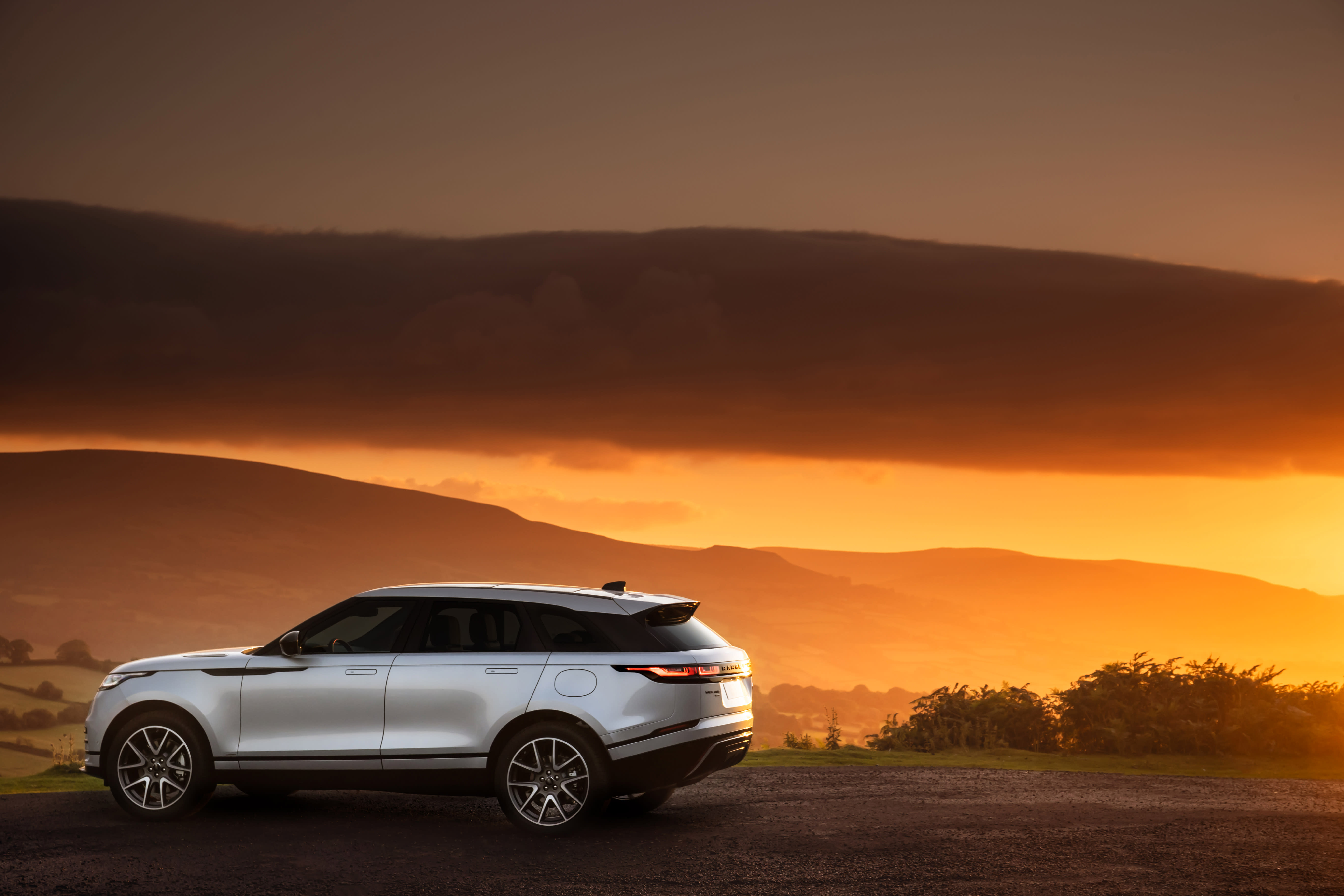
Key Features
If it’s got a Land Rover badge on it, then you know it’ll be able to tackle tough terrain. Despite the Range Rover Velar being very much a road-focussed model, it’s still able to show a clean pair of wheel tracks to most SUVs off-road.
It relies on Terrain Response 2, a system capable of detecting what surface the vehicle is covering and adapting accordingly. It’s the same system found in many Land Rover products and makes the Velar much more capable than the casual observer would presume, slinging power from wheel to wheel to keep you moving.
A pair of great technological assets to have off-road is the duo of a wading depth sensor and surround view cameras. The former ensures you don’t drive into water that’s too deep, using radar pinging down from the wing mirrors to measure how much water is beneath you — it’ll cope with 580mm if you pick the air suspension option. The latter allows you to swing a virtual camera around the outside of the car, making it easy to pick out obstacles and navigate your way around them.
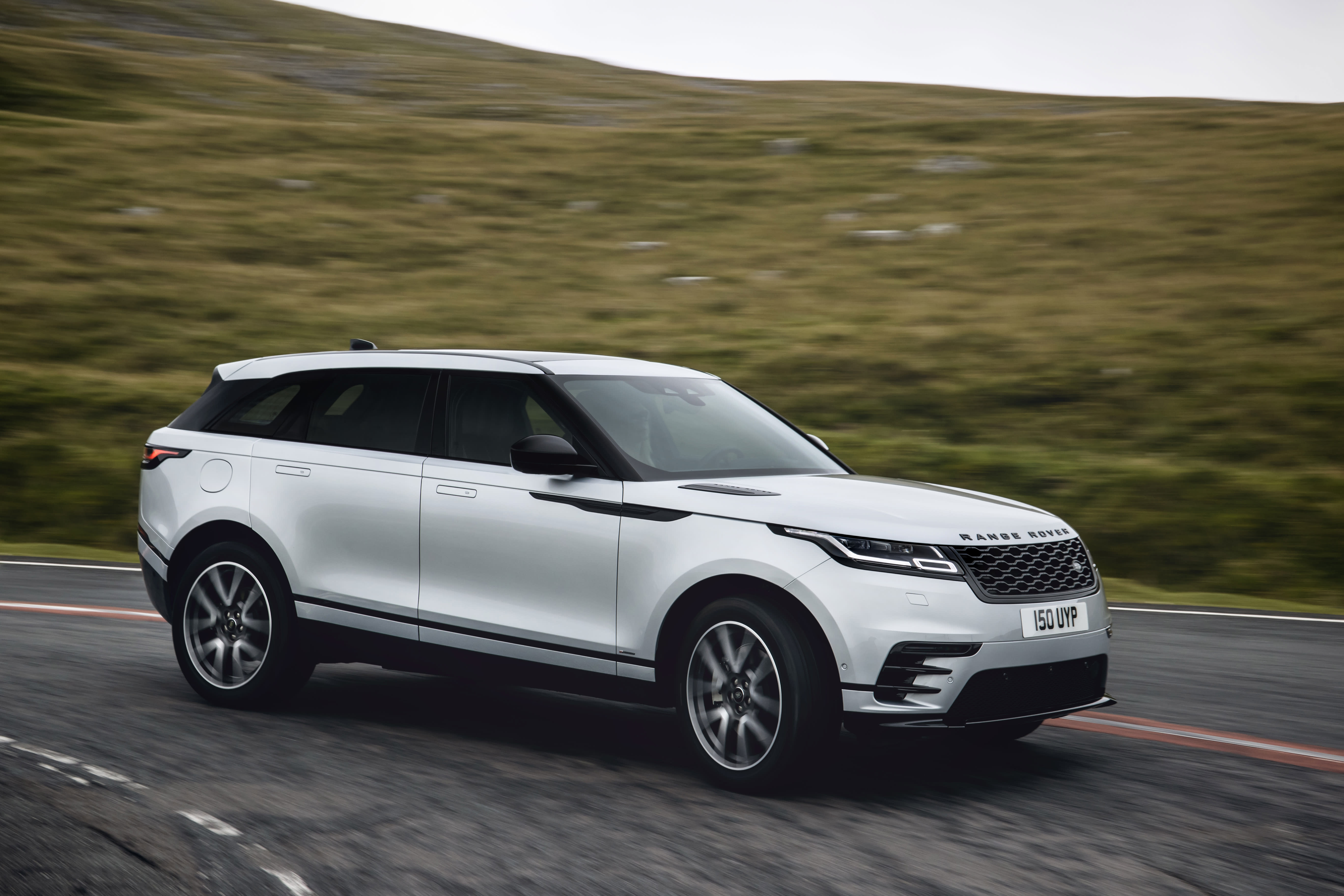
Performance & Drive
Driving any Range Rover comes with an air of opulence and prestige, and the Velar is no different. You might not tower over lesser vehicles in the same way you do in a full-fat Range Rover, but the increased ride height over regular cars is something buyers desire. You waft through towns with pleasing refinement, partly due to the noise-cancelling tech that works like a set of fancy headphones; the car listens for unwanted noise and then plays a frequency through the speakers to cancel it out. This system is super clever as not only does it have a notable effect, but it also adapts itself to how many people are in the car. The net result is a serene environment to travel in.
The Velar is the most road-focused Range Rover in the lineup, and its slinkier stature means there’s less body roll, and its steering feels more direct than other Range Rovers, contributing to this car’s more hunkered down feeling when driving. It flows with the road's undulations, all while that all-wheel-drive system provides plenty of reassuring grip and traction no matter the weather.
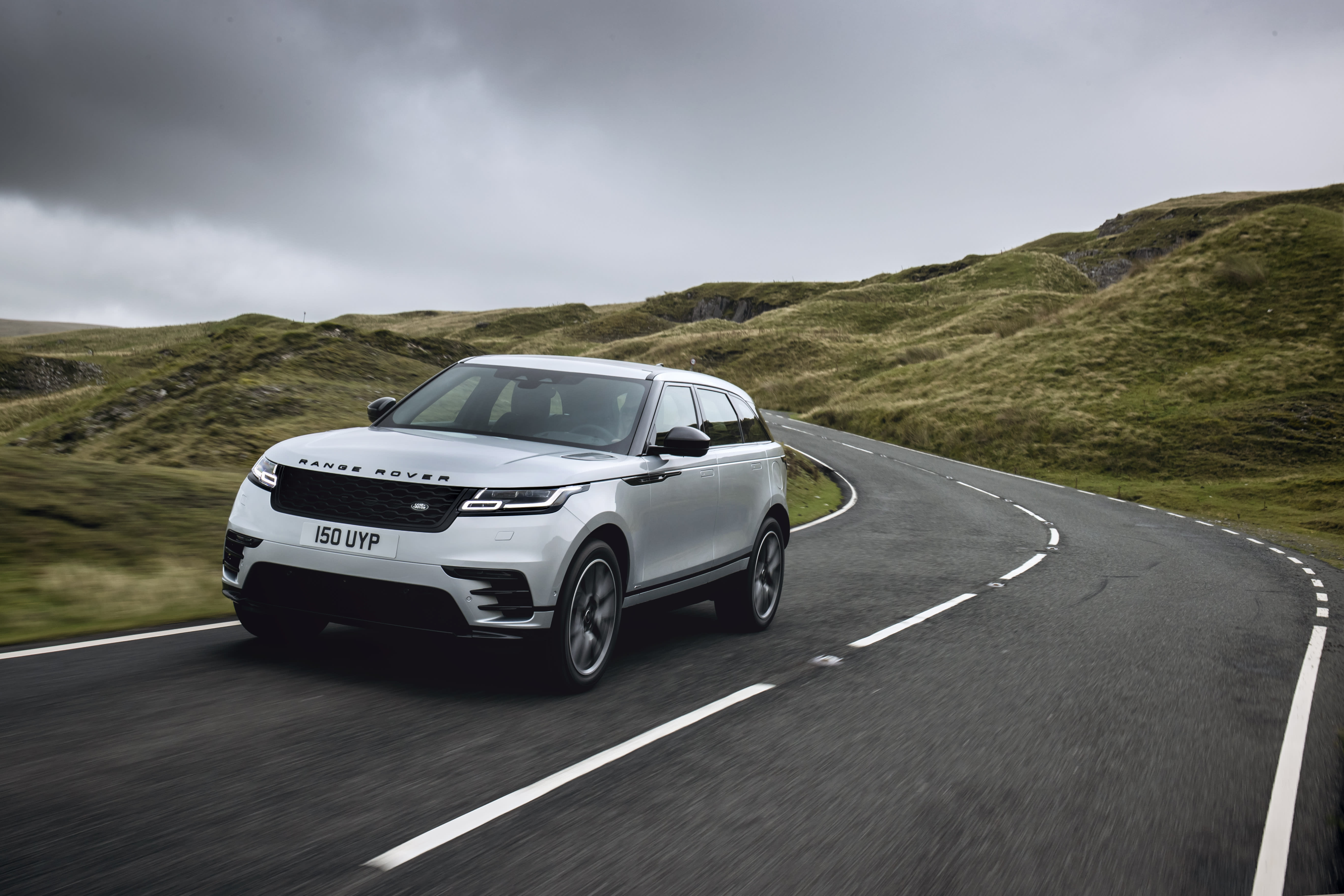 Driven in EV mode, the PHEV Velar 400e is blissfully quiet and relaxing, but start to use its combined 404hp and 640Nm of torque, and you’ll soon realise there are greater benefits to the battery than just economy. Prod the throttle, and a rapid response comes courtesy of electric motors and the engine being effortlessly fed into the equation. It’s fast, as a 5.4-second sprint to 62mph can attest, and deploys its performance potential in a totally effortless way.
Driven in EV mode, the PHEV Velar 400e is blissfully quiet and relaxing, but start to use its combined 404hp and 640Nm of torque, and you’ll soon realise there are greater benefits to the battery than just economy. Prod the throttle, and a rapid response comes courtesy of electric motors and the engine being effortlessly fed into the equation. It’s fast, as a 5.4-second sprint to 62mph can attest, and deploys its performance potential in a totally effortless way.
This is not the most engaging car to drive in the class, as there’s still a good degree of detachment from what’s going on beneath you, but it does possess a purposeful command over its direction changes.
There are two suspension options for the Velar, one a passive coil setup, and the other is adaptive air suspension, but 400e (the plug-in hybrid we’re testing) lease customers miss out on the flashier air option. However, the standard coils strike a nice balance between ride comfort and stability, managing to soften the worst crater in our roads. Things do become a little more intrusive in terms of road noise and shudder reaching the cabin if you go for a car with larger 22-inch alloy wheels, it’s far from backbreaking, but that’s something to keep in mind when building your Velar.
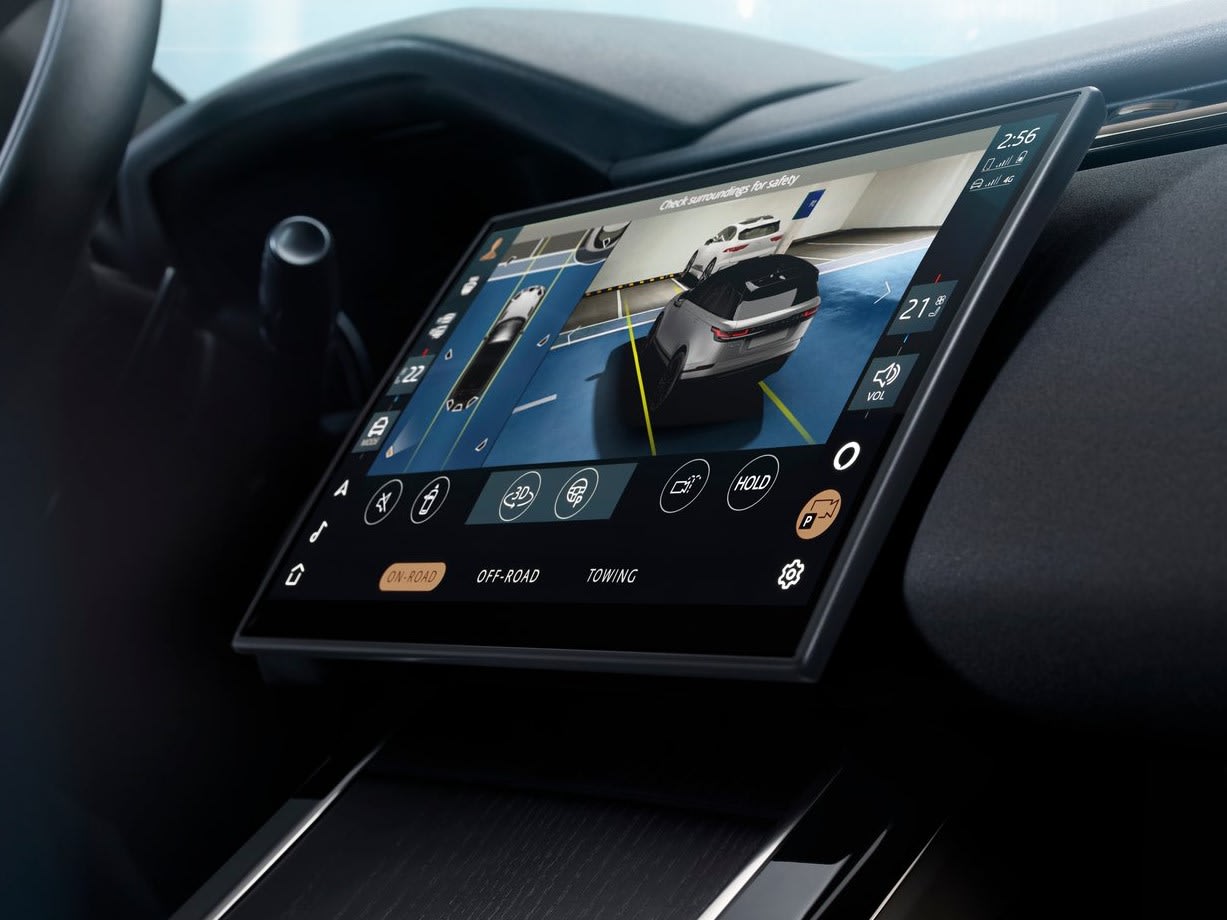
Running Costs
A plug-in hybrid usually means reduced running costs, but in the world of Range Rovers, everything’s relative. That said, if charged and used as intended, the plug-in Velar can deliver impressive economy. It’s dictated by three modes with ‘EV’ allowing up to 33 miles of pure electric motoring, ‘Hybrid’ using the battery and engine together for the best economy, and ‘Save’ enabling you to maintain a selected battery charge level.
The headline economy figure of 128.4mpg is, theoretically, possible but requires you to keep the Velar’s battery topped up at every opportunity. Let it run flat — say, on a long motorway run — and suddenly, you’ll be very happy with 30mpg.
Having an electric range of 33 miles also means that the Velar 400e doesn’t qualify for the very lowest rate of BIK. Instead, the most efficient model gets hit a 12% rate, while others go as high as 16%. For a 40% taxpayer, that roughly translates to an annual bill of between £3,100 and £4,900.
Land Rover covers its vehicles with a three-year, unlimited mileage warranty. It’s something you might need, as reliability issues continue to be an issue with the brand — it finished 31st out of 32 in What Car?’s most recent reliability survey.
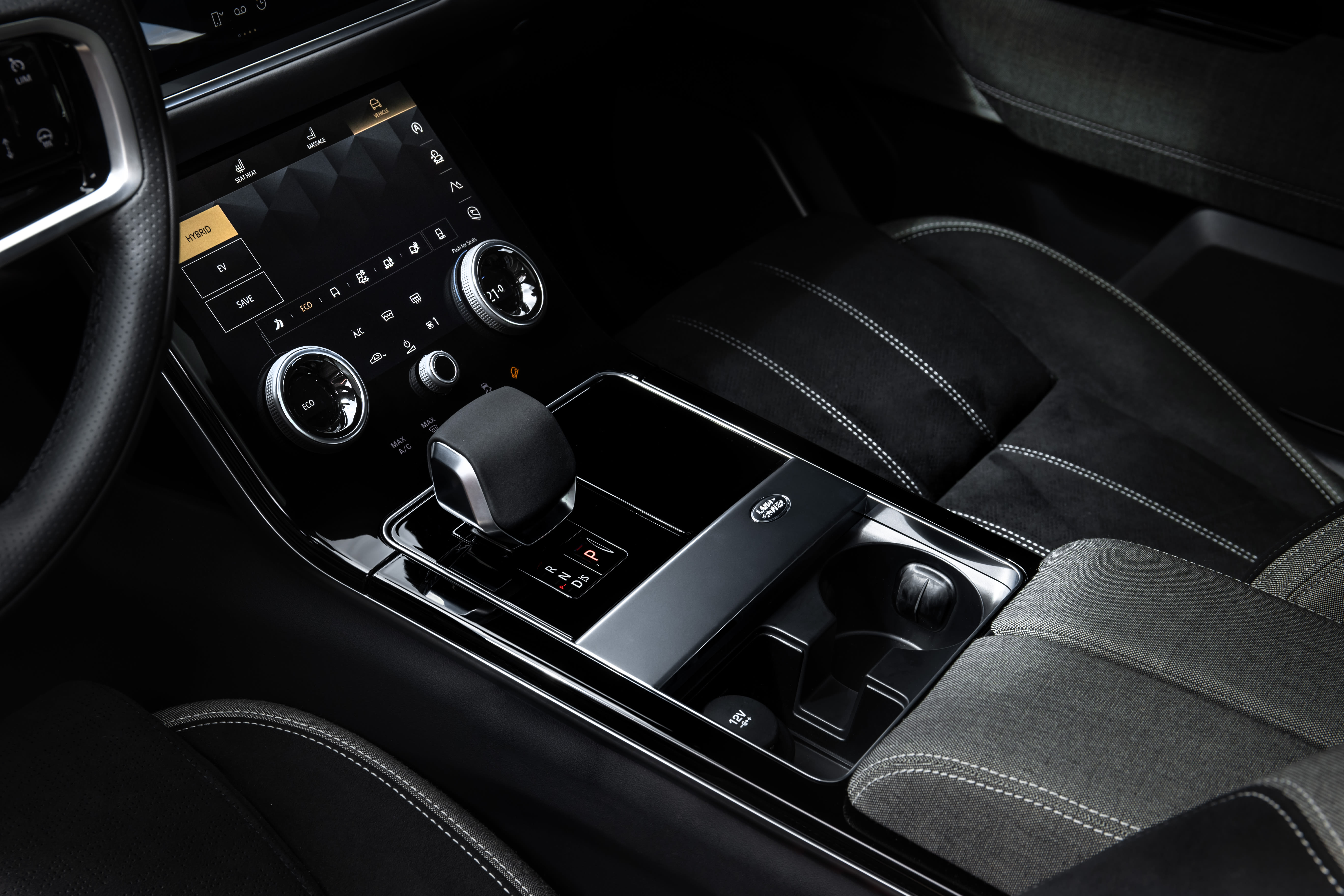
Interior
The interior is exactly what you’d expect of any vehicle wearing the Range Rover badge; lovely premium materials line key surfaces, with Alcantara and leather bathing this luxurious cabin. The glossy finishes and aluminium details elevate this space to a level that feels special. All cars get a 10.0-inch Pivi touchscreen infotainment system, but order a vehicle with the Pivi Pro, and a second screen full of rich graphics and integrated physical dials makes for a visually impressive centrepiece — although do bear in mind that another update is coming, with a smoother, more integrated screen. All cars come standard with Apple CarPlay and Android Auto, but JLR’s latest system is pretty good in and of itself. Our only real gripe is an ergonomic oversight where the new gear selector partially obscures the driver’s temperature control. Accidentally bumping the selector while driving has no consequence, but its placement could be better.
The Velar sits on the same platform as the Jaguar F-Pace, so it shouldn’t surprise you that it is of a similar scale. Like its Jaguar sibling, the SUV seats five in a wonderfully upholstered interior. There are a few questionable material choices for trim lower in the cabin, but generally, it feels plushly appointed. Nice detailing and attractive design give this space a unique atmosphere.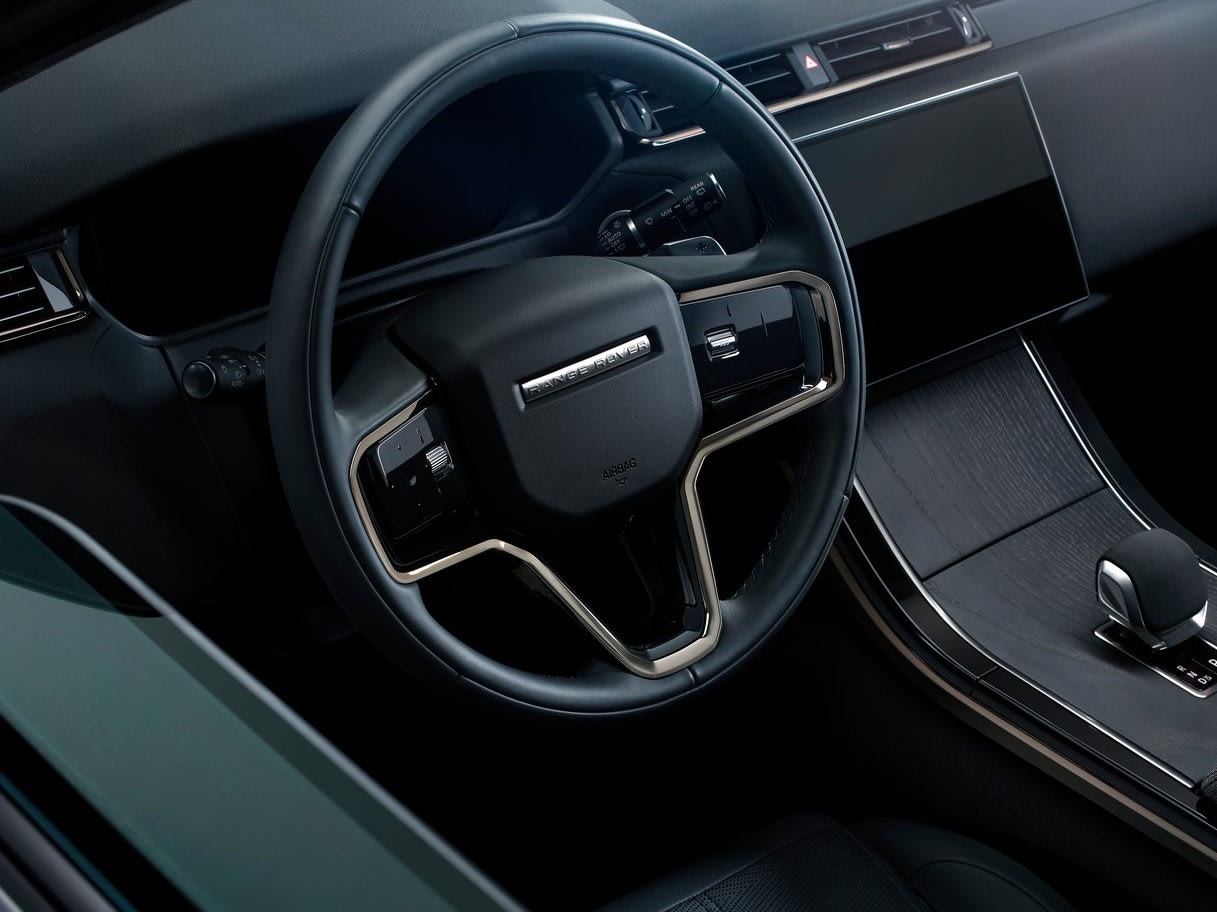
The rear bench seats three, with the outermost passengers receiving ample headroom but less legroom than some rivals. A tall driver sitting ahead of a tall passenger leaves less room than you’d like, especially if you want to stretch out. The middle passenger is well accommodated despite sitting in a slightly raised potion; however, they do have to contend with a protruding transmission hump.
Boot space in the regular Velar is excellent, at 748 litres, which is more than enough for a dog or a selection of suitcases. Fold the rear bench down to take advantage of a nice flat floor extending capacity to a mammoth 1,811 litres. Engineers worked hard on the PHEV variant to ensure its batteries didn’t impact cabin space, but they do reduce boot space to 625 litres, or 1,693 litres with the seats down. That is still a large amount of space, and more than you’ll find in an Audi Q5 Sportback.
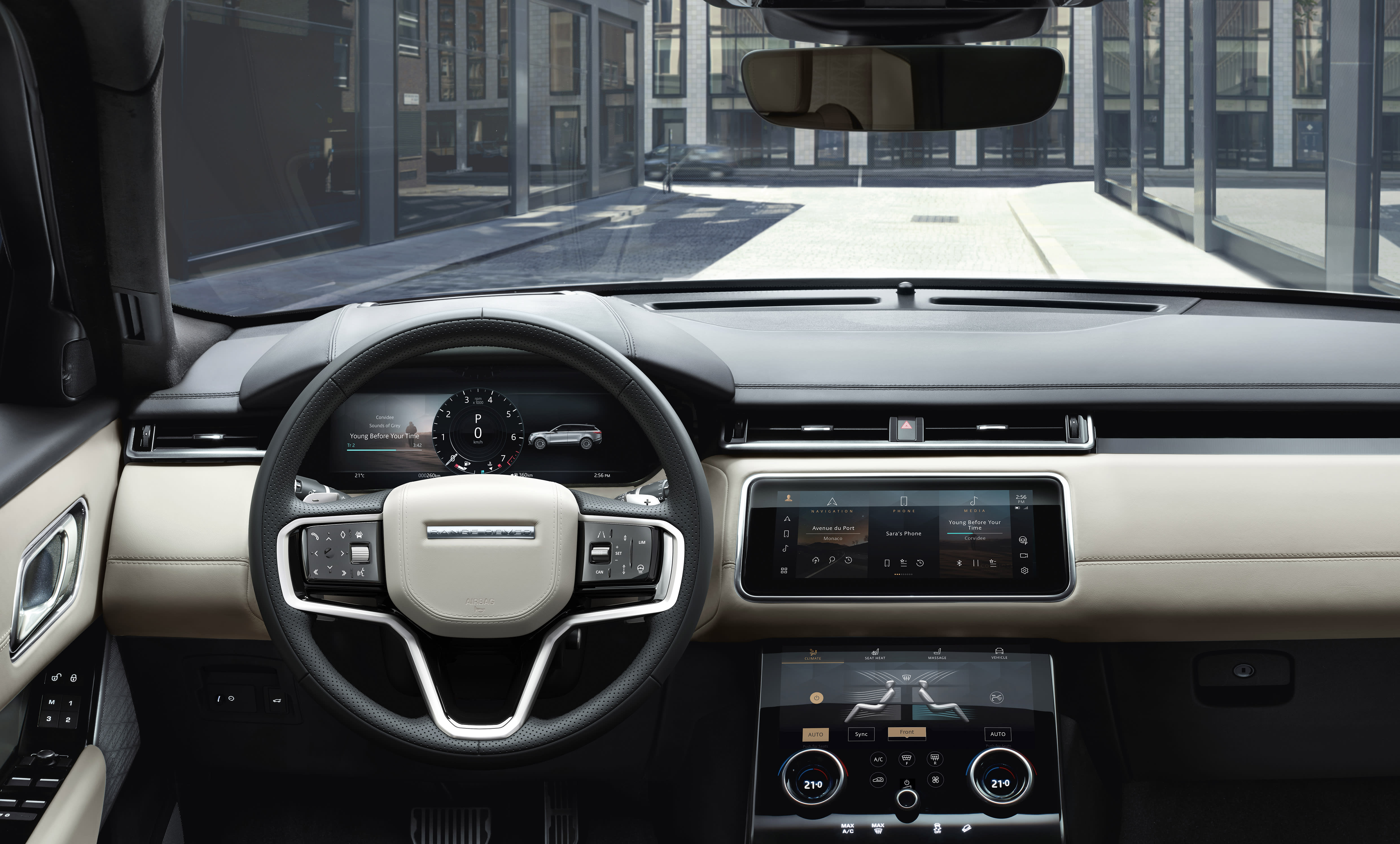 Safety
Safety
Safety experts at Euro NCAP put the Velar through its comprehensive testing programme in 2017, where it scored a full five stars.
Pleasingly, Land Rover has ensured the Velar is fitted with a long list of active and passive safety equipment, with little relegated to the options list. All models come with lane-keeping assist, automatic emergency braking, a reversing camera, parking sensors all around, cruise control and trailer stability assist, amongst other kit.
Those heading off-road get a few bonus features, including hill descent control, hill launch control and gradient release control.
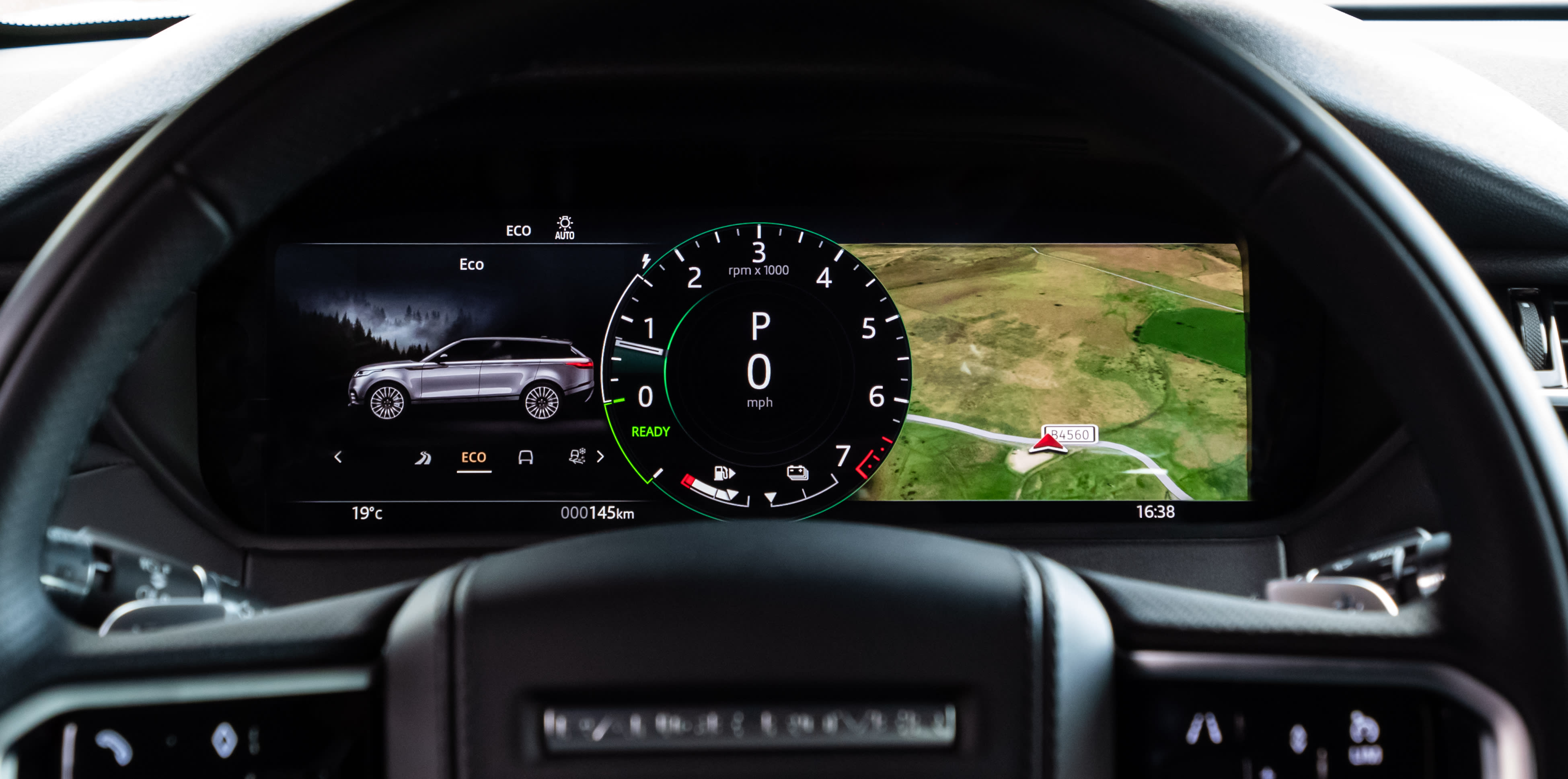
Options
Before you spend some time specifying your perfect velar, make sure you book a day or two off work — of the 36 pages in the latest brochure, 24 are taken up by the options list!
Paint colours, roof colours and wheels do, in fairness, take up a fair chunk of that, and it’s probably best to take some time to ensure your Velar looks as sharp as you’d like.
It gets far more complicated when you look at what you want on the inside; there are 15 different seat options, for example. Do you want heated seats? Front and rear? How much adjustment would you like? A memory function, perhaps? Would you like built-in cooling, too? Surely a massage option is essential. And so it goes on.
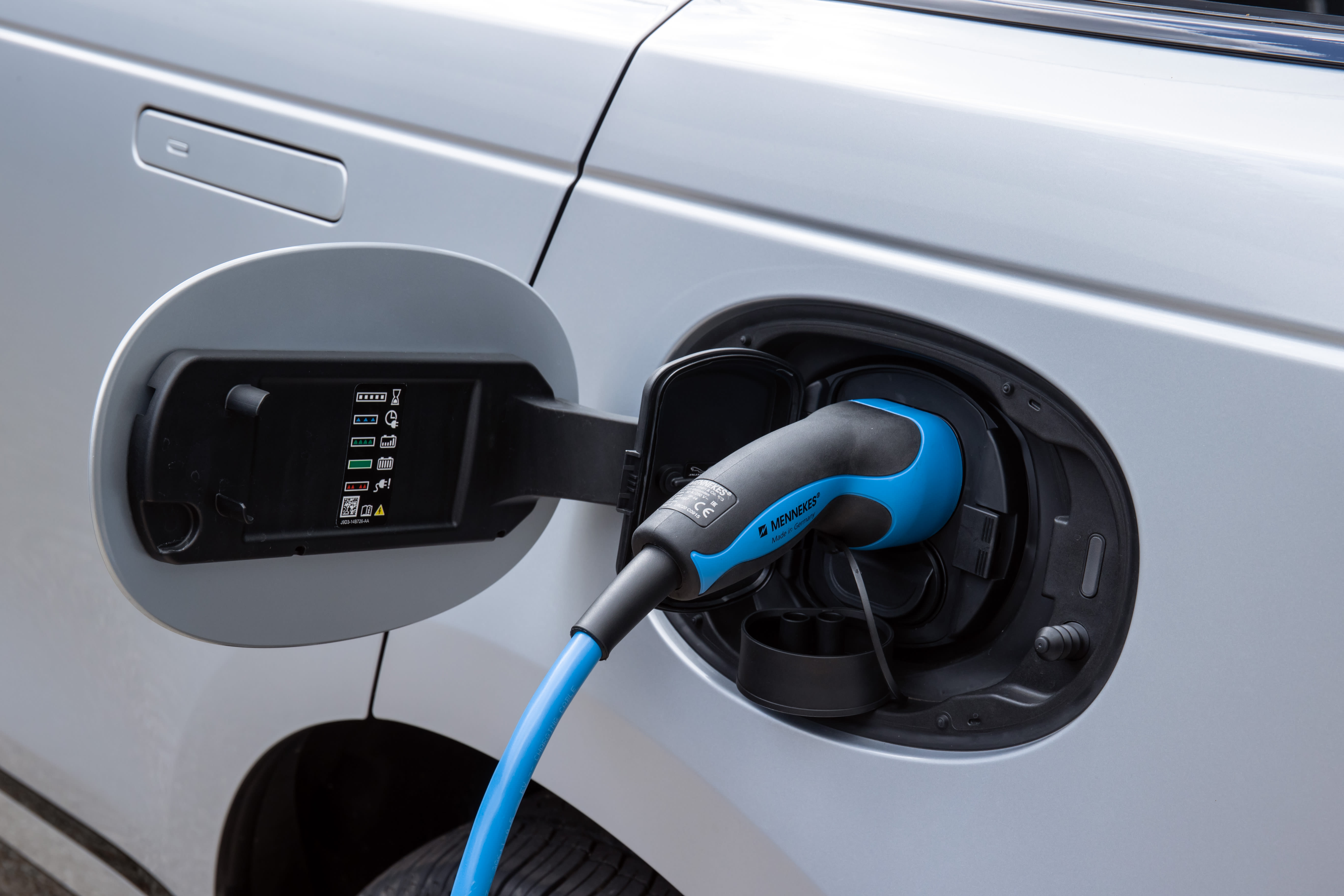
Rival Cars
There’s a growing number of road-focused luxury SUVs, but the most obvious rival is the one that shares so much with the Velar; the Jaguar F-Pace, Is lovely to drive and every bit as practical as the Velar, with the same wide range of engines, but it is a little firm and won’t tackle rough terrain in the same way.
Audi’s Q5 Sportback looks tremendous and benefits from a stunning cabin, but it’s an expensive purchase, and while it looks fantastic inside, it’s quite tricky to use.
The Mercedes-Benz GLC Coupe is an oddball choice, but it has more street presence than any of its rivals and balances that with some fine driving dynamics and a lovely cabin. It’s not a practical option, though, and won’t get further than a polo field car park off-road.
Verdict
The latest Range Rover Velar enhances an already commendable package. Its road-bias nature gives it pleasing on-tarmac manners, while the Range Rover DNA means it’s not afraid to venture from the beaten path. The new P400e plug-in hybrid drivetrain has quickly become our pick of the range. This luxury SUV should be a default choice for most Range Rover customers, considering where it will be predominately used – it’s as close as we’ll ever get to that fabled ‘Road Rover’.
Where to next?
View latest Range Rover Velar leasing deals - from just £677.99 per month inc VAT**.
Call us on 0118 3048 688 or hit the green 'Enquire' button for more details.
Looking for a great leasing deal? Check out our incredible range of car lease deals.
New SUV? Read our latest Car Reviews and find the right model for you.
Want to know more about leasing? Take a look at our comprehensive Leasing Guides.
Interested in everything motoring? Why not catch up on all the latest Car Leasing News.
**Score based on Select’s unique meta score analysis, taking into account the UK’s top leading independent car website reviews of the Range Rover Velar
**Correct as of 04/08/2023. Based on 9 months initial payment, 5,000 miles over a 48 month lease. Initial payment equivalent to 9 monthly payments or £6,101.91 (Plus admin fee) Ts and Cs apply. Credit is subject to status.





















